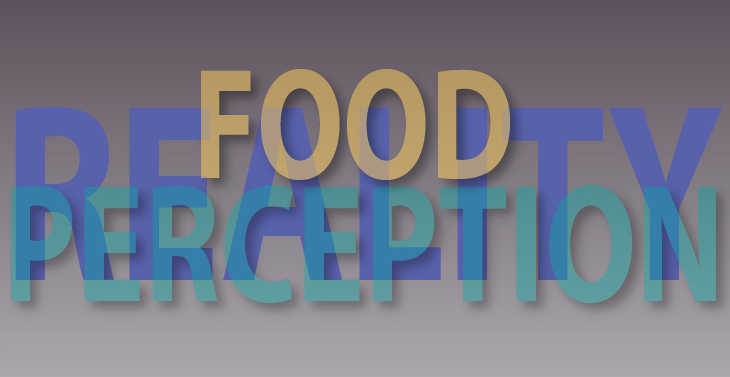Human sensation, be it vision, hearing, or other sense, tends to be logarithmic. That means that when something like brightness or sound doubles in intensity, our perception is that the source is only a bit more intense. For us to perceive that one light is twice as bright as another, or one sound twice as loud, it might have to be ten times as intense. The logarithmic response of our senses gives them incredible range, allowing us to hear the tick of a watch or the proverbial pin-drop that’s barely enough energy to move our eardrums, but also able to hear crashing thunder or jet engines without distortion. This perceptual trend applies to our ability to estimate volume, as pointed out in an article in the Harvard Business Review by Pierre Chandon.
While Chandon’s purpose is to maximize sales yields for manufacturers and vendors, the article points to some important fundamentals of how we choose how much to eat. Generally, when we add volume to something, we underestimate how much we’re really adding. Here’s an example from my new book, AC: The Power of Appetite Correction: If we take a 7-inch plate full of pasta and compare it to a 10-inch plate, we might think the 10-inch plate holds about twice as much because the plate diameter has increased by about half, and that expands both the length and width of the plate. In reality, the 10-inch plate holds more than three times as much as the 7-inch plate. Because the volume grows in three dimensions and our appreciation of that volume only accounts for two dimensions, we underestimate how much more pasta is on the plate, and thus, when we use a larger dish, we often underestimate how much more we’re eating.
The distortion of volume perception Chandon describes is combined with another economic reality in restaurants: the cost of the food is one of the smallest costs of running a restaurant. Most restaurants have to keep their food costs under 10 percent of their total expenses to break even—things like wages, rent, advertising, cleaning and insurance make up the other 90 percent. The cheapest way for a restaurant to impress you with a sense of good value is by adding food volume because the incremental cost of the additional food is small compared to what it costs to operate the restaurant and get you in the door. This “value math” is demonstrated in McDonald’s french fries; even though a large order of fries has 50 percent more fries (and calories) than a medium order, it is only about 12 percent more expensive. The additional cost of the fries, from McDonald’s point of view, is negligible, so they’ll throw a lot of extra food in your serving just to squeeze 12 percent more cash from your pocket.
The best value from your perspective is not the most fries for the money, but the most eating satisfaction. If, in determining the amount of satisfaction you get from the food, you consider not just the amount of food you get per dollar spent, but also the significant value of not putting on extra pounds in the process, the value equation shifts: when it comes to selecting a size, your best overall value may be the size with the highest price per volume of food.
In order to impress you with a sense of value, many American restaurants serve massive portions of food on platters—dishes far larger than anyone would typically use at home. With these large servings, we perceive value and abundance, but based on Chandon’s article, we don’t perceive that we may be eating twice as much as we’d choose to eat at home or from a smaller plate.
Chandon’s article points out another interesting feature of our sensory impressions of dining: those who were encouraged to savor and recall the flavor chose smaller portions. That’s key—if we sit down to a meal with the intent of tasting and remembering it, we choose to eat less of it. It’s as if our brain’s grasp of the food is enhanced by taking the time to appreciate it, even before we start eating!
Chandon’s article makes yet another important point relating to diet: when people are offered three different sizes of food, they’ll choose “regular” regardless of the actual size of the serving, and whether “regular” is the largest size or the smallest size available. The label of the size matters more than the size of serving does!
The viewpoints of marketing studies like Chandon’s offer an interesting window on human eating behavior, and indicate how we might go against the grain and avoid excessive eating:
- Start with a smaller serving dish and add additional servings of the same size until no longer hungry, so the added volume is arithmetic (1 serving, 2 servings) rather than tripling the serving size from the start.
- Anticipate savoring and remembering your meal before serving it up.
- When selecting a size for a food item, ignore the Goldilocks and “value” labels that try to get you to spend a little bit more on every item. Look at the actual food volume and select the size you prefer, keeping in mind that a size that looks significantly larger than another is likely twice the size with twice the calorie content.
- If you eat in restaurants often, split an order with someone, then order more if you’re still hungry.



